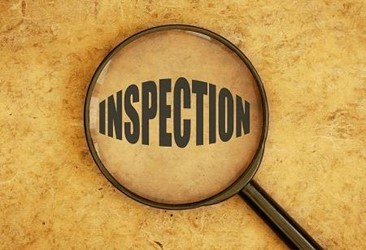Preparing For Health Authority Inspections: 4 Keys To Inspection Readiness
By Megan Marshall and Maryann Badala, Halloran Consulting Group

Health authority inspections are one of the most stress-inducing experiences a sponsor, CRO, or site will go through. The mere mention of inspections is enough to throw some people into full on panic-mode. While preparing for an inspection will never be a care- and stress-free process, there are appropriate ways to get your organization ready for one without adding another layer of stress and frustration. Preparing for an inspection should be a thoughtful process, to avoid burning resources checking unnecessary boxes. In taking a strategic and right-sized approach to your inspection readiness (IR) preparations, you can alleviate some of that stress and frustration by equipping your team and programs with the appropriate tools to navigate through an inspection. This article will discuss four best practices to help your organization become inspection-ready.
1. Timing is everything! Don’t wait until the last minute.
IR activities should not be a fire drill but rather a carefully planned and executed process based on organizational needs. It is important you give yourself plenty of time to prepare for inspections. Timelines will vary based on the size of your organization, your development stage, and your submission goals. A smaller company that has never undergone an inspection may start IR preparations 12 to 18 months prior to submission, while a larger company, with deep inspection experience and a planned submission schedule, may start two to three years in advance.
There are many activities that organizations can use as part of their IR preparation, but you are less likely to get stakeholder buy-in if you wait until two months before an anticipated inspection to start them, especially when there are competing priorities. It is important to have a large enough window of time, so you can begin working through your IR activities without inundating your functional areas with additional tasks. Creating a timeline of IR activities helps teams not only to understand the importance of the activities but also the process flow. No one wants to hear that, in addition to the laundry list of things they already have to do, you are giving them a bunch more work — and only two to three months to complete it. You are much more likely to get positive feedback from your teams if you deliver IR activities in manageable doses. This is not always feasible, but for those who have the benefit of time, we would highly recommend taking advantage of it.
2. Understand your current state of inspection readiness.
An organizational assessment of readiness is a key part of your IR activities. Having that “right-sized” approach to readiness will alleviate unnecessary activities and redundancy in the long run. Take the opportunity to learn and gauge where your organization currently stands in regard to IR. Meet with your study team and understand their perspectives on where the high-risk areas are or where issues occurred within your study. Take the time to review audit reports and CAPAs (corrective and preventive actions) to ensure any identified issues were managed appropriately. By learning where the potential risks and/or issues are at the study level you can then evaluate where you might have overarching process issues that need to be addressed. This includes engaging with the functional areas involved in the particular study (i.e., Data Management, Clinical Supply Chain, etc.) to better understand where processes are affected.
The assessment shouldn’t just be applicable to risks or issues with the study but can also span to other areas of the organization. Is this the organizations first inspection? Is the study team inspection naïve? Are the subject matter experts who will speak to these processes experienced in front of an inspector? Are the study team members who are closing out the study the same study team members that started it? These are all things to consider when assessing your readiness. We have yet to come across a study that doesn’t have some gray areas, so being aware of those things that were less than perfect and taking the time to prepare will be a big part of navigating through a successful inspection.
3. Use your readiness assessment to think about what activities you prioritize.
As discussed, the information gathered during your organizational readiness assessment should drive the IR activities. In order for people to stay engaged and immersed in inspection readiness activities it is really important to have a good perspective on what will bring the most value to your organization. Don’t waste your or others’ time with monotonous basic inspection readiness training if the company has gone through multiple inspections. Maybe it’s time to kick the training up a notch and fine tune other areas of the inspection process, now that the organization has a good handle on the basics of why they get inspected. Maybe a member of your study team knows the issues and can speak through the study challenges effortlessly. Does it make sense to take that individual away from their work to sit through multiple sessions of the same behavioral training?
If you have locked your database and are in the process of writing your submission or clinical study report (CSR), it may not be worthwhile to perform an investigator site audit — you generally wouldn’t unlock a database to update data discrepancies identified when comparing source to the electronic case report form (eCRF) that may have been discovered during an audit. Instead, it may be more beneficial to conduct a site inspection preparation visit to ensure the site is ready for a potential inspection. We are not saying that inspection readiness should be taken lightly, by any means, but rather that these activities should be moving the needle on your organization’s overall readiness and should not just be going through the motions. We have witnessed firsthand what inspection readiness fatigue looks like, and it is a real thing. Keep your teams motivated by being transparent and explaining why activities are being performed. Sharing rationale for inspection readiness activities helps keep everyone engaged as you move through the process.
4. Keep in mind: A mock inspection is not a readiness assessment but is a useful part of IR.
This is a common misconception that we encounter all the time. A mock inspection is your organization’s opportunity to practice everything you prepared for during your inspection readiness activities. It is your dress rehearsal for the big day and should be treated as such. This is your opportunity to gain an inspector’s feedback on how you have perceived your own risks. This is not the time to be identifying your gaps — truth be told, nothing should come as a huge shock to you during a mock inspection. This is your time to practice your logistics, interviewing techniques, and overall ability to convey what happened during your study.
However, a mock inspection is a crucial part of inspection, especially for those organizations that have not been through an inspection before. This gives your team a great opportunity to pressure-test the system and see where additional tweaks need to be made prior to the real inspection. Again, there should be no major surprises, and hopefully any required remediations are able to be completed efficiently.
Conclusion
Preparation is key to navigating through a health authority inspection. Take the time to really develop a strong plan of action when it comes to inspection readiness. By understanding what matters most to your organization, you are able to home in on those high-risk areas that may play an important part in your inspection. By taking a more strategic approach to inspection readiness, you will better position your organization to refine necessary skills without experiencing additional burden and/or burnout from activities that provide little benefit to your teams. IR activities are a crucial part of an organization’s ability to get through an inspection, so it is important to ensure that your activities add value to elevate organizational confidence.
About The Authors:
 Megan Marshall, a consultant in the Quality practice at Halloran, is a QA professional with expertise concentrated in the biotechnology and pharmaceutical industry. Her career is focused on providing quality support across multiple disciplines including clinical operations, device manufacturing, and laboratory practices. Marshall has supported clinical QA initiatives including inspection readiness activities, behavioral coaching, and GxP training and audits. Prior to joining Halloran, she worked as a QA specialist at Oxford Immunotec. She is a certified as a Medical Laboratory Scientist by the American Society for Clinical Pathology, and as a Certified Quality Improvement Associate through the American Society for Quality.
Megan Marshall, a consultant in the Quality practice at Halloran, is a QA professional with expertise concentrated in the biotechnology and pharmaceutical industry. Her career is focused on providing quality support across multiple disciplines including clinical operations, device manufacturing, and laboratory practices. Marshall has supported clinical QA initiatives including inspection readiness activities, behavioral coaching, and GxP training and audits. Prior to joining Halloran, she worked as a QA specialist at Oxford Immunotec. She is a certified as a Medical Laboratory Scientist by the American Society for Clinical Pathology, and as a Certified Quality Improvement Associate through the American Society for Quality.
 Mary Ann Badala is a senior consultant in the Quality practice at Halloran Consulting Group. With more than 15 years of experience in the biotechnology and pharmaceutical industry, her career has focused on clinical quality assurance (QA) process improvement initiatives, good clinical practice (GCP) audits/investigations, and FDA, MHRA, and EMA inspection readiness activities (including mock inspection preparation, storyboard development, coaching, and preparing clinical investigator sites for inspection). Prior to joining Halloran, Badala was a director at Agios, where she supported the development and implementation of the GCP QA function, including oversight of clinical studies, audits, and inspection readiness activities.
Mary Ann Badala is a senior consultant in the Quality practice at Halloran Consulting Group. With more than 15 years of experience in the biotechnology and pharmaceutical industry, her career has focused on clinical quality assurance (QA) process improvement initiatives, good clinical practice (GCP) audits/investigations, and FDA, MHRA, and EMA inspection readiness activities (including mock inspection preparation, storyboard development, coaching, and preparing clinical investigator sites for inspection). Prior to joining Halloran, Badala was a director at Agios, where she supported the development and implementation of the GCP QA function, including oversight of clinical studies, audits, and inspection readiness activities.
